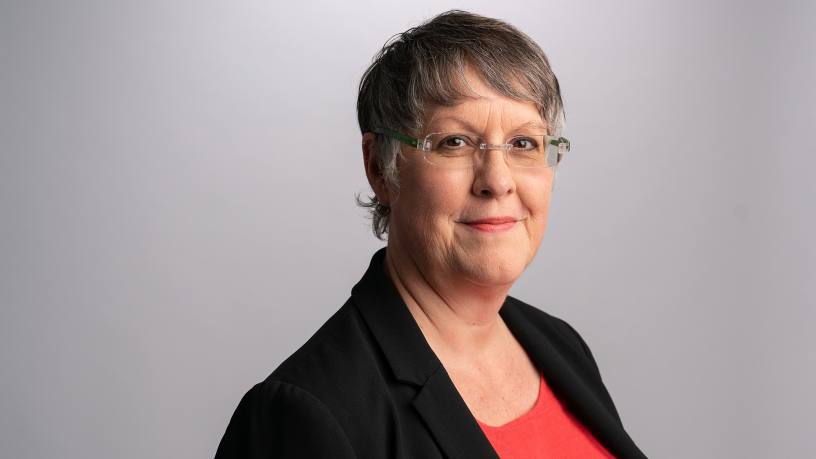Ensuring that one billion people have access to frictionless finance is an ambitious target, but one that Rajesh Bansal, CEO of Reserve Bank Innovation Hub (RBIH), is set on.
“If you look at the way financial services are structured, whether in India or globally, there’s many complex processes involved, starting from know-your-customer requirements when opening a bank account to a loan application. So, we slice and dice the population segments to uncover friction that is impacting tens of millions of people,” he says.
Launched in March 2022, RBIH is an independent, not-for-profit company set up and 100% owned by the Reserve Bank of India (RBI). Its purpose is to “foster and evangelise” innovation in the financial sector, according to Mr Bansal, who was a member of the founding team of Aadhaar, India’s biometric identity (ID) system launched in 2010, and played a key role in creating India Stack, the country’s digital public infrastructure.
In his most recent role, Mr Bansal has a team of 30 “passionate and purpose-driven” people intent on changing the country. Their work is focused on three pillars of innovation. The first is process innovation. For example, RBIH conducted a study to understand the barriers smallholder farmers face in accessing a $1000 loan.
“We brought our innovative thinking and technology to reinvent the entire customer journey. Something that used to take weeks now happens in hours, and we have automated the process with no or minimal human intervention,” he says.
RBIH is also working with a fintech start-up focused on providing frictionless savings products to women in India to help them save digitally, and has launched a study on migrant women to understand how they use Indian digital payment rails, such as the Unified Payments Interface (UPI), to send money home.
More on financial inclusion
The hub’s second pillar is product innovation. RBIH is working with banks and fintechs to tailor products for each individual based on their economic activity and digital footprint. He uses the example of a banana seller in Bangalore, who sells Rs500 ($7) in a day and accepts QR codes and UPI. “Their digital footprint is available because people are paying by QR code, so it’s possible to develop financial products,” says Mr Bansal.
“We believe that the product should be tailored to the customer’s financial flows and not supply-side driven,” he adds. “While a bank may want a monthly repayment plan, a banana seller might want a daily repayment plan. That is available today with the existing digital rails in India.”
The third pillar is policy innovation. “We are working proactively with regulators and governments to understand what the industry needs and how we can make policy more proactive to enable innovation,” he explains.
A critical element of RBIH’s work is focused on women and ensuring that every female adult in India gets access to products in the way she wants. It is engaging with providers to create new products and processes, to enable easy access to savings, payments and credit to women in India.
The hub works by first identifying a real problem which needs to be solved, through field research, extensive consumer research and stakeholder consultation. Then it looks at potential solutions.
“We work with academics, bankers, fintechs and regulators to explore how we can use India’s digital tools to solve the problem. If we see that there is no current solution, we do a hackathon with the many brilliant minds in India and around the world,” according to Mr Bansal. RBIH then incubates the solutions with the help of partners, such as leading academic institutions, Indian Institute of Management and Indian Institute of Technology.
For example, RBIH recently launched a project on providing credit to street vendors, and one of its co-incubated start-ups is working with banks to deliver that product.
We can get [a start-up and a big tech] in the same room, and enable a mutually beneficial relationship between them
If there is a solution, RBIH finds the right partner institution to pilot and test the solution, and then scale it. “We are able to do this because we have easy access to all stakeholders being an RBI subsidiary. We are like a public policy institution, with no private interests at play,” he explains.
“We can connect a start-up to big tech and the largest bank in the country, get them in the same room at the same time, and enable a mutually beneficial relationship between them.”
Importantly, RBIH can also help unlock a lot of data, which would be difficult for a bank or fintech to unlock. “While the government won’t talk to a fintech or a bank, they’re happy to work with us to unlock that data for benefit of citizens,” he adds.
The hub works with both state-owned and private banks, the biggest and the smallest. “We are a start-up and for a year we had to establish our brand and our credibility. Today, most of the large banks’ CEOs realise that we are giving world-class consulting at no cost to help them reinvent banking and finance,” he says.
“Fintechs are also a very critical stakeholder for us because they bring the agility to implement solutions.”
Joy Macknight is editor of The Banker. Follow her on Twitter @joymacknight
Register to receive the Editor’s blog and in-depth coverage from the banking industry through The Banker’s e-newsletters.






